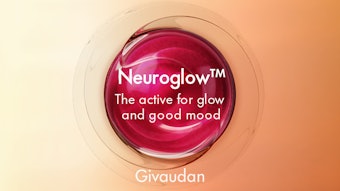Why has this article been titled “Formulation Fantasies”? Numerous examples of claims that are made in the popular press misrepresent the facts about formulations used on the skin for personal care, and cosmetic science is not well-served by this misinformation. Here, the authors examine a number of such statements, specifically that:
1. 60% of a material placed on the skin is absorbed;
2. liposomes and nanoparticles penetrate skin;
3. there are generic, “do all” formulas;
4. the nature of the formulation does not affect permeation; and
5. it is possible to target different strata of the skin.
In relation, also discussed is the need for rational design of preparations for application to the skin.
60% Absorption?
Perhaps the first of these above statements is the most often quoted. A simple search on the Internet for the terms beauty products and skin will reveal: “Even manicures and pedicures should be avoided because studies show that you absorb through your skin about 60 percent of whatever you put on it. Some of these things can be full of harsh chemicals that are bad for your overall health and especially your baby.”1 Also, “Your skin—the body’s largest organ—absorbs up to 60 percent of the products you put on it every day, from soaps to shampoos to sunscreens. Considering that most of us use about 10 different products daily, that can really add up.”2
In fact, as most cosmetic scientists know, the skin has evolved to keep water in and other xenobiotics or foreign substances out. The outer layer, i.e., the stratum corneum (SC), is a unique membrane that is about a sixth of the thickness of a piece of paper. It is composed of dead cells that are filled with keratin and are very dense in nature. The cells overlap, as in a brick wall (see Figure 1), and the mortar that surrounds them is a complex mixture of lipids organized into bilayer arrays.
A molecule crossing the SC diffuses through the intercellular space and must cross sequentially from lipophilic to hydrophilic domains. Substances that are hydrophilic in nature will be held back by the lipophilic domains and conversely, lipophilic substances will be held back by the hydrophilic domains. It is the general goal of a topical formulator to get as much active as possible across the skin, unless it is a material such as a sunscreen, which is required to remain on the skin surface or in the uppermost layers for as long as possible.
However, even with optimized formulations, it is rare to see more than a few percent of the active penetrate the skin. This has been known for some time; studies3 such as those by Feldmann and Maibach in 1967 showed that only about 2% of hydrocortisone alcohol is absorbed through the skin. It is perhaps surprising that the question, “Where does the remaining 98% go?” has not yet been answered. If this could be solved, it may be possible to create formulations that are far more efficacious.
The skin is a barrier to excessive water loss from inside the body to the outside environment, and the fact that it is such a good barrier means only a limited amount of a drug or chemical can permeate. Although there is loss by rubbing or on clothing, the real reason for low permeation of a substance is skin structure.
Liposome/Nanoparticle Penetration?
It has been postulated that liposomes or nanoparticles will aid penetration; however, there is little evidence to substantiate deeper penetration of intact liposomes or nanoparticles. Simple consideration of the laws of diffusion indicates that large molecular weight species and nanoparticles greater than 1 nm in radius will diffuse so slowly that penetration is negligible. Particles that have been seen in deeper tissues have been associated with hair follicles, and their presence at the base of the hair follicle can only be attributed to a “pumping action” as hair is rubbed back and forth during application of a formulation.4
‘Do All’ Formulas and Permeation
If the physicochemical properties of cosmetic actives are examined, it is clear that they range from materials that are highly soluble to highly insoluble, and from extremely hydrophilic to extremely lipophilic. This means it is not possible to have a generic “do all” formulation, but that it will be necessary to tailor the formulation to the properties of the active. This process was started by the work of Wiechers et al.5 and his concept of Formulating for Efficacy.
It is important to consider the solubility of the active in a formulation and to choose components such that the active is close to saturation when applied to the skin. The formulation components should also improve the solubility of the active in the skin; i.e., enter the SC and improve penetration. This means the nature of the formulation can affect permeation, contrary to statement #4 above.
This can be seen in work with simple formulations containing 5% niacinamide.6 The concentration depth profile of niacinamide was measured in vivo using confocal Raman spectroscopy in simple vehicles containing propylene glycol (PG), propylene glycol monolaurate (PGML), Miglyol (MG) excipient, dimethyl isosorbide (DMI) and mineral oil (MO). The results, shown in Figure 2, reveal clear differences in the amounts of niacinamide having penetrated into the SC of the forearm after a 30-min period.
Targeting Skin Strata?
Again due to the nature of diffusion, it is also impossible to target specific strata of the skin. Diffusion occurs as a result of a concentration gradient and therefore, it is not possible to modify a formulation such that the active will be concentrated in the viable epidermis or dermis. Highly lipophilic materials will concentrate in the SC because of the low partition into the underlying tissue, which is predominantly aqueous in nature.
Solubility was highlighted here earlier as an important parameter that is influenced in the skin by the nature of the solvents used in the formulation. These implications may explain why the percentage of absorbed active is often very small. The experiments conducted by Feldmann and Maibach were carried out using a solvent system that would both evaporate and penetrate rapidly. This means that when the solvent evaporated, it would leave the active “stranded,” crystallized on the skin surface or in the skin lipids. This is shown schematically in Figure 3.
In the left-hand diagram, if the active crystallizes in the middle of a corneocyte, it cannot diffuse to the intercellular spaces where it can diffuse deeper into the skin. If, however, the formulation creates a film on the skin surface, lateral diffusion can occur. This would improve bioavailabilty and may be one reason that materials such as the constituents of liposomes can improve absorption; improved absorption from liposomal formulations is not a result of the liposome penetrating intact through the SC.
It is self-evident that the residence time of the formulation components in the SC will also influence permeation. Small, highly permeable solvents such as propylene glycol will permeate through the skin so rapidly that they can leave the active crystallized in the skin lipids, whereas a solvent such as octyl salicylate, which permeates much more slowly, does not leave the active stranded. This has been shown for the medicinal agent oxybutynin.7
The permeation of both the formulation components together with the active has rarely been investigated due to the difficulty of analyzing solvents or excipients, which is not trivial. However, advances in techniques such as confocal Raman spectroscopy are allowing such studies to be conducted.8 The utility of this approach has been demonstrated in the described in vivo studies on niacinamide.6 There is a good correlation between the amount of niacinamide, applied as a 5% solution in various solvents, in the SC and the amount of solvent or vehicle (see Figure 4).
Why Optimize?
It would be advantageous to optimize topical formulations for a number of reasons, such as where the active is expensive and there are obvious cost of goods implications, but also where some compounds present safety issues. A case in point is retinoids, where enough of the active is required to have an effect but delivery of too much may cause an irritant response. Formulations can be optimized using a combination of effects; for example, using a penetration enhancer plus the supersaturation technique. Using this approach, twentyfold degrees of enhancement have been demonstrated for the delivery of a topical corticosteroid.9
Consider the advantages of this. Suppose in a conventional formulation, 100 units of retinoid are required, 1% permeates and 1 unit has a biological effect on normal skin. For a twentyfold enhanced formulation, the concentration applied can be reduced by a factor of 20 while still getting 1 unit to the site of action. Now consider what happens if the conventional formulation is applied to more permeable skin, e.g., in the region of the eye. If it is 10 times more permeable, then 10 units will be absorbed and irritancy may occur. However, in the case of the enhanced formulation, there are only a maximum of 5 units applied, and so the upper limit that can be absorbed is limited and irritancy is prevented.
Future Developments
In the future, considerable developments in biophysical techniques will be made to enable scientists to monitor the concentrations of the active and the excipients in the skin. It should therefore become possible to make rational decisions on formulation components that will optimize the delivery of actives. This is likely to be a result of understanding both the influence of the excipients on the solubility of the active in the skin and their residence time in the SC. Excipients not only influence solubility, they also can alter the diffusional resistance of the skin as a result of intercalation into the endogenous skin lipids. With more information on the interaction, it should be possible to combine a choice of selected excipients to have predictable synergistic effects. Increasing the effective delivery of the actives will be of considerable benefit to the consumer, the personal care industry and the field of cosmetic science.
The primary motivation in writing this article was to address a number of misconceptions concerning formulations and the skin. The formidable barrier function of the skin remains a challenge for scientists and the unique features of this membrane are not well understood by the consumer. The influence of skin creams and formulations on the penetration of active ingredients must be communicated in a responsible and practical manner to the public if the industry is to banish the prevalent myths.
References
Send e-mail to [email protected].
1. I Roces, Safe, organic beauty products for moms-to-be, available at https://lifestyle.inquirer.net/36077/safe-organic-beauty-products-for-moms-to-be/ (Accessed Mar 20, 2013)
2. How to go green: Why to go green, available at treehugger.com/htgg/how-to-go-green-why-to-go-green.html (Accessed Mar 30, 2013)
3. ME Lane, Nanoparticles and the skin—Applications and limitations, J Microencapsulation 28(8) 709–716 (2011)
4. RJ Feldmann and HI Maibach, Penetration of 14C hydrocortisone through normal skin: The effect of stripping and occlusion, Arch Dermatol 91 661–666 (1965)
5. JW Wiechers, CL Kelly, TG Blease and JC Dederen, Formulating for efficacy, Int J Cosmet Sci 26 173–182 (2004)
6. D Mohammed, doctoral thesis, University College London School of Pharmacy (2012)
7. P Santos, AC Watkinson, J Hadgraft and ME Lane, Oxybutynin permeation in skin: The influence of drug and solvent activity, Int J Pharm 384 67–72 (2010)
8. PD Pudney, M Mélot, PJ Caspers, A Van Der Pol and GJ Puppels, An in vivo confocal Raman study of the delivery of trans retinol to the skin, Appl Spectrosc 61 804–811 (2007)
9. R Marks, PJ Dykes, J Gordon, G Hanlan and AF Davis, Percutaneous penetration from a low dose supersaturated hydrocortisone acetate formulation, Br J Dermatol 127:433 (1992)










